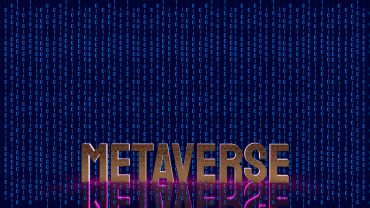
By embracing IT democratization, companies can give dedicated IT staff the time and resources they desperately need to address a growing list of business-critical tasks.
While organizations today face a serious scarcity of tech talent, demand for organizational IT services is nevertheless growing. In fact, the pandemic has considerably increased the speed of digital innovation, triggering a demand for technological initiatives and solutions that many IT teams are unable to deliver due to a lack of funding. To make up for this, line-of-business (LOB) executives who are not part of IT groups are increasingly choosing, developing, or personalizing their own technology. This phenomenon, called “IT democratization,” has been on the rise for many years, growing in popularity as it frees up time and resources for IT teams and enables business users to be more independent and innovative.
Gartner’s research tells us that the arrival of the PC first ushered in IT’s evolution from centralized to distributed computing. Later, the development of enterprise CRM and ERP software began to engage business users in IT purchasing decisions. Non-technical employees continued to gain influence in the mobile age thanks to new trends like bring-your-own-device (BYOD) and bring-your-own-apps (BYOA). Fast forward to the cloud technology of today, and company leaders are now able to access immense computing resources without deep involvement from the IT department.
That said, there are plenty of businesses that continue to ask their employees to manually carry out antiquated processes — even with the current technology available to them. To compete in today’s rapidly modernizing digital economy, businesses need to invest in low-code/no-code platforms to enable business users to solve their problems, regardless of technical skill. Indeed, IT democratization is crucial for long-term business performance and offers a number of benefits to speed up enterprises’ digital transformation journey.
See also: Why Low Code Development Still Needs Some IT Oversight
How empowered business technologists help companies thrive
By 2024, non-technical business users will build nearly 80% of IT products and services. Why? Because business technologists want to tap into the many benefits of technology on their own, independently creating and leveraging the solutions they need. And while it may be tempting to view this shift as a threat, IT leaders should understand that the growing empowerment of business units is really a tremendous opportunity.
By embracing IT democratization and enabling business technologists to build their own IT solutions autonomously, companies can give dedicated IT staff the time and resources they desperately need to address a growing list of business-critical tasks. What’s more, innovation has room to flourish when there are “citizen developers” working in every department across an organization.
A large number of IT services currently available were built to offer users greater independence while lessening the volume of work for technical specialists. In fact, with the power of Software-as-a-Service (Saas) solutions with service-based models at their disposal, there’s no longer a need for IT professionals to use their time to install and maintain software. Plus, better usability of standard apps empowers staff to carry out more activities independently.
However, to truly advance IT democratization, organizations must go a step further, granting non-technical employees the power to build and personalize their own applications.
Leveraging low-code solutions to accelerate development
By leveraging low-code tools, users can design apps and workflows with little or no coding required. Low-code application platforms, which usually offer straightforward interfaces and drag-and-drop functionalities, allow anyone, regardless of formal technical expertise, to construct solutions rapidly.
As with the growing movement toward IT democratization, low-code tools really aren’t new. They’ve existed in the marketplace for years. However, the pandemic and the ensuing acceleration of digital business have significantly increased demand for these services. In fact, if adoption keeps up its current pace, by 2025, employees will have built 70% of corporate apps using low-code tools and technologies. And with the pandemic-induced eCommerce boom continuing to boost demand for these offerings, I predict that percentage will only grow.
For companies today, navigating a challenging environment while strapped with limited resources, low-code technologies and integration tools offer an effective way to empower every employee to contribute to their team’s success. Offering benefits across a wide range of business functions, low-code application platforms enable users to:
- Create apps to integrate data records, track assets, and govern approval procedures
- Give workers on assembly lines and in warehouses important information regarding sales orders and products
- Integrate data to house all sales leads within a single application
- Develop efficient systems employee expense management and processing
- Automate the creation of demo environments for salespeople
Supercharge innovation and boost organizational productivity
To achieve important business objectives and reach the next level of growth, innovative leaders must recognize the power of low-code technologies, built to enable business technologists to develop their own apps and systems. In addition to bridging the widening skills gap and tech talent shortage, low-code solutions give IT departments the opportunity to keep their focus on business-critical activities, supercharging their potential to fast-track innovation and create true value for the organization.



























